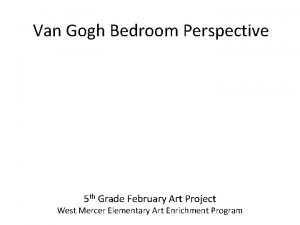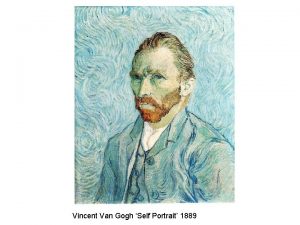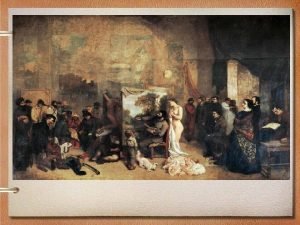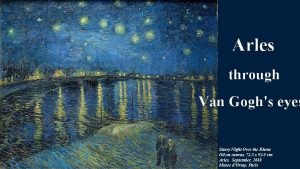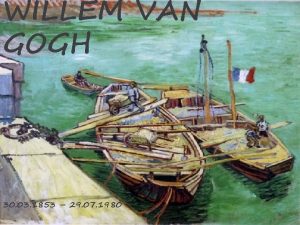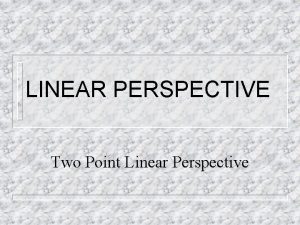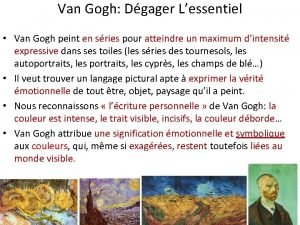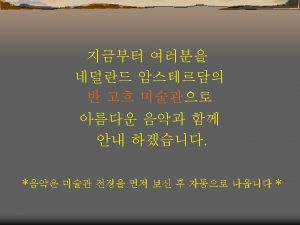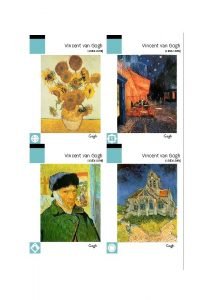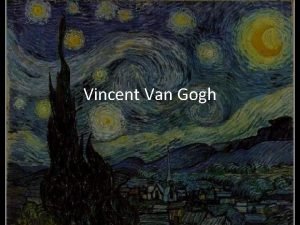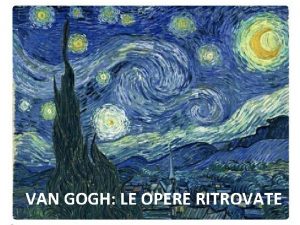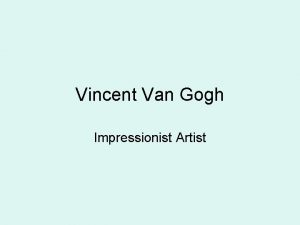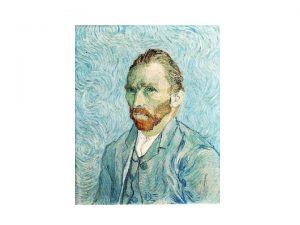Linear Perspective Two Point Perspective Van Gogh Two



















- Slides: 19

Linear Perspective (Two Point Perspective)

Van Gogh

Two Point Perspective • Perspective that depicts three-dimensional objects receding or proceeding from two vanishing points on a two -dimensional surface.


Hopper






Remember: In two-point perspective most lines are either vertical or orthogonals. There are rarely horizontal lines in two-point perspective!




If the box is on the horizon line, it will look similar to this:

Shadows: • https: //www. youtube. com/watch? v=pp 4 yka ck. WDo • https: //www. youtube. com/watch? v=8 XLgm i. Ex. Abw


2 Point Perspective Project • Turn your 12”x 18” paper horizontally. • Draw a horizon line & a vertical line through the center of the paper and add a vanishing point on each end of the horizon line. • Lightly draw 2 of your initials in 2 point perspective. Remember to start with a vertical line for the front corner of the letter, then draw orthogonal lines and vertical lines for each side of the letters. • Outline the cast shadows for each letter using a light and shadow vanishing points. • USE A RULER!!!

• Choose 2 colors to use on your letters from the water color sets. One color for each letter. • Paint one side of each letter lightly (the side that faces the light source). • Using the same colors, paint the other side of each letter a darker shade of that color (the side facing away from the light source). • Blow dry each time you paint a side of a letter so the paints don’t bleed together. • Use a different, third color to paint your shadows. They should fade from dark to light as you get farther from the base of each letter. • Paint the top half lightly one color and the bottom half lightly with another color. • Put it on the drying rack. • After the paint dries, use color pencils to add values and details to the letters and cast shadows.
 One point perspective hallway
One point perspective hallway Bedroom perspective
Bedroom perspective Vincent van gogh pronunciation
Vincent van gogh pronunciation Van gogh self portrait
Van gogh self portrait Vincent van gogh lebenslauf
Vincent van gogh lebenslauf When was vincent van gogh born
When was vincent van gogh born Vincent van gogh quotes about death
Vincent van gogh quotes about death Kirken i auvers
Kirken i auvers Van gogh slikar
Van gogh slikar El grito y la noche estrellada
El grito y la noche estrellada Vincent van gogh solrosor
Vincent van gogh solrosor Quando e dove nasce l'impressionismo
Quando e dove nasce l'impressionismo Atividade noite estrelada van gogh
Atividade noite estrelada van gogh Monocromia cores
Monocromia cores Vincent don mc
Vincent don mc Van gogh colour theory
Van gogh colour theory Silent night van gogh
Silent night van gogh Van gogh kunststil
Van gogh kunststil Vincent van gogh
Vincent van gogh Vincent willem van gogh
Vincent willem van gogh

